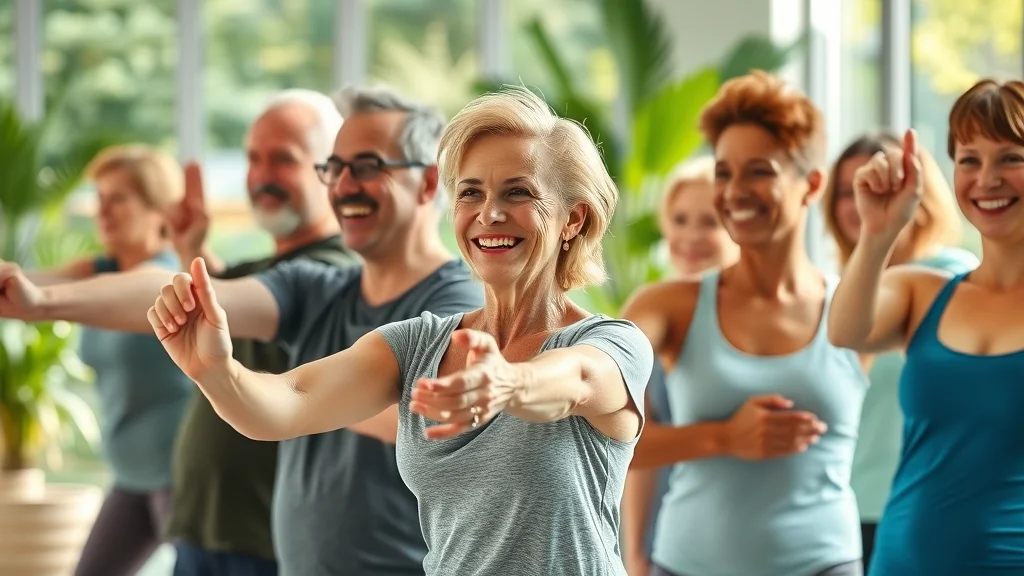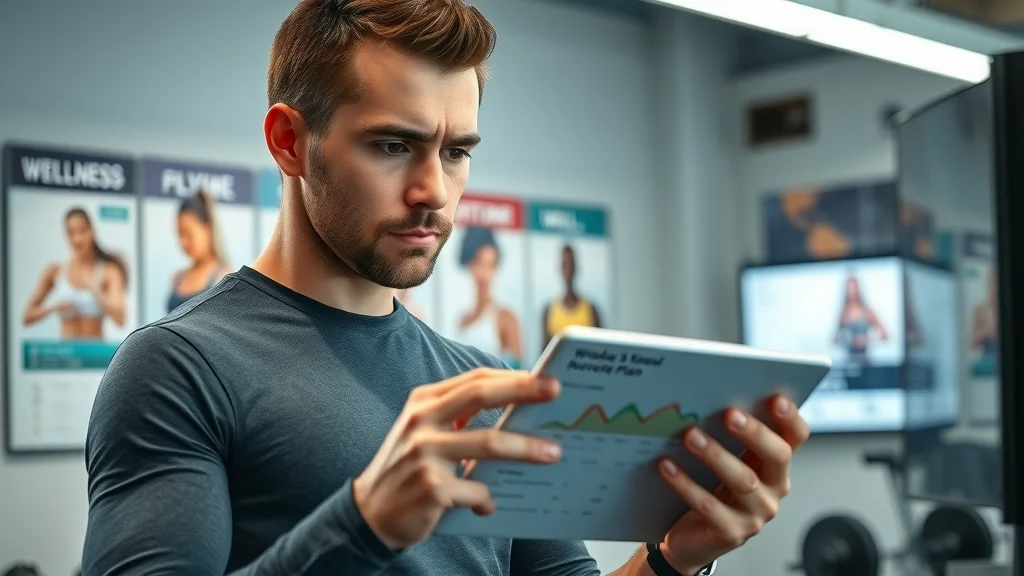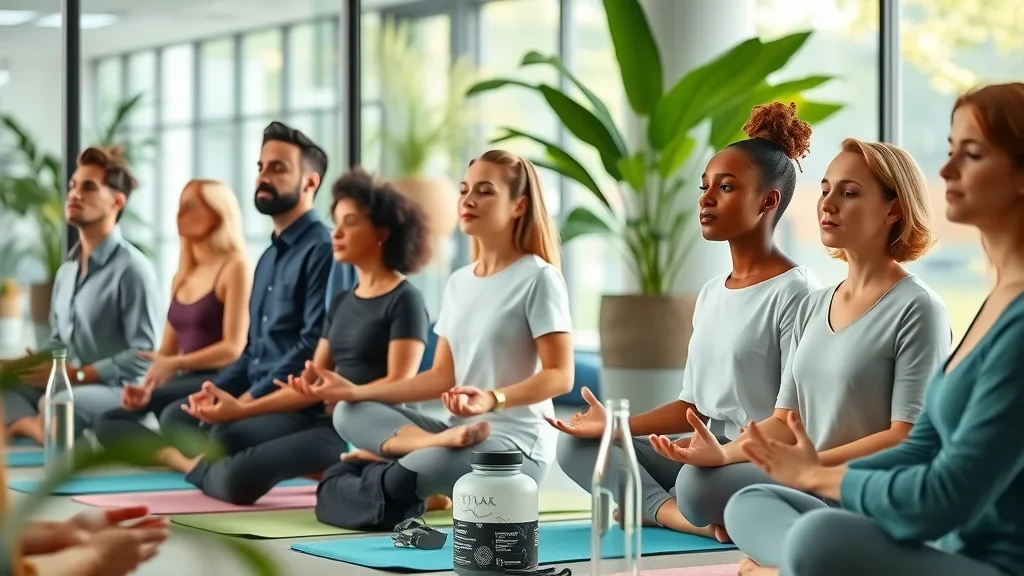Unlock Longevity with Exercise Routines: Insights from Christian Maguire
As we seek strategies that extend not only our lifespan but also our health span, the conversation around exercise routines grows ever more vital. For today’s fitness program directors, wellness coaches, and workplace health professionals, the question isn’t simply “How do we keep people moving?”—it’s “How do we empower them to thrive for decades to come?” In this article, Christian Maguire of Long Island Health & Vitality brings decades of real-world experience to the table. His expert perspective weaves a tapestry of scientific rigor, actionable planning, and a passion for helping others realize their greatest potential. Prepare for a journey that unpacks the why and the how of longevity-focused fitness, delivering insights that can transform both personal practice and organizational wellness culture.
“Longevity isn’t just about adding years to life but adding life to years through the right exercise routines that support both body and mind.”
— Christian Maguire, Long Island Health & Vitality

Why Exercise Routines are Essential for Healthy Aging in Wellness Coaching
According to Christian Maguire, exercise routines are foundational to healthy aging—not merely because they foster movement, but because they energize every system of the body and mind. For wellness coaches and health professionals, the opportunity is clear: curated fitness programs don’t just improve muscle mass or heart rate; they equip individuals for resilience against the march of time. As Maguire details, the most effective routines blend simplicity and sophistication, meeting clients where they are and guiding them toward greater functionality and engagement.
Aging no longer needs to be synonymous with decline. Maguire underscores that effective exercise routines can recalibrate an individual’s approach to life, slow physiological aging, and even reverse certain effects associated with sedentary lifestyles. By working with both the physical and psychological aspects of health, leading experts are forging a paradigm shift.
“Tailored fitness programs are key to energizing employees and supporting sustainable health in corporate environments.”
— Christian Maguire, Long Island Health & Vitality
For those interested in the science behind how exercise and nutrition can actively reduce biological age, exploring scientific approaches to biological age reduction offers practical strategies and deeper insights that complement longevity-focused fitness routines.
Supporting Evidence and Expert Strategies Behind Longevity-Focused Exercise
Integrating Mindful Movement with Exercise for Enhanced Vitality
Christian Maguire emphasizes a trend that’s reshaping workplace and wellness coaching: integrating mindfulness with exercise for expansive, lasting results. Mindful movement techniques—think intentional breathing, present-moment awareness, and functional flexibility—have been shown to amplify the physiological benefits of exercise. According to Maguire, the true “aha” moment for clients often surfaces when they begin to sense real, sustainable energy gains and an improved ability to recover from stress.
Mindful movement, when paired with evidence-backed exercise routines, becomes a catalyst for resilience and transformation. Employees and clients alike report feeling less fatigued, less anxious, and more adaptable. As Maguire puts it:
“Combining mindful living strategies with targeted exercise amplifies energy and resilience, crucial for long-term wellness.”
— Christian Maguire, Long Island Health & Vitality
This approach anchors participants in their experience, making routines engaging and wholly present—qualities linked to higher adherence, reduced injury risk, and a greater sense of progress.

Benefits of combining mindfulness with fitness routines: Maguire finds that participants experience enhanced energy, reduced stress, better focus, and improved recovery times, all crucial for peak performance and endurance over the years. The mindful integration of movement also nurtures emotional resilience, helping individuals respond positively to both physical and professional challenges.
Steps to design longevity-focused exercise programs: Start with an assessment of baseline physical fitness and lifestyle needs, Maguire recommends, followed by setting realistic, progressive goals that reflect both the science of aging and individual goals. Programs should blend cardiovascular, strength, and mobility work with restorative practices, creating balance and longevity for the participant.
How to adapt routines for diverse populations in corporate wellness: According to Maguire, customizing intensity, duration, and modalities—whether that’s yoga, functional training, dance, or team-based sports—ensures inclusivity and safety. He stresses the importance of cultural relevance and addressing different fitness backgrounds, which fosters greater participation and results for all.
Case Study: Implementing Longevity Exercise Plans in Corporate Wellness Settings
The impact of expertly designed exercise routines is best revealed through real-world application. At Long Island Health & Vitality, Maguire’s work with corporate teams stands as clear evidence: prioritizing longevity yields measurable and inspiring results. Through tailored, group-based exercise programs—intertwined with mindfulness and education—organizations witness transformation within their culture, engagement, and health indices.
A major corporation, partnering with Maguire, instituted a program blending mobility circuits, resistance training, and stress-management workshops. The outcome? Not only did employee vitality rise, but tangible indicators such as reduced sick days, higher reported focus, and improved morale reinforced the program’s value. This case demonstrates a critical point: when leadership commits to longevity-focused exercise routines, it plants the seeds for a wellness culture where both personal and organizational success can flourish.

Enhanced employee vitality and reduced burnout: Staff actively reported feeling more energized and resilient, with increased ability to manage work stressors.
Improved physical and mental health markers: According to Maguire, participants saw improved blood pressure, body composition, and mood, which translated into better productivity and engagement.
Greater engagement and sustainable wellness culture: The ripple effect spread beyond participants, nurturing an organizational ethic that values proactive, ongoing self-care.
Background and Additional Tips for Fitness Directors and Wellness Coaches
Common Misconceptions About Exercise and Aging
In Christian Maguire’s extensive experience, commonly held beliefs about seniors and exercise routines can sabotage progress and dampen enthusiasm. One major misconception is that aging necessarily means reducing exercise intensity or avoiding resistance work. In fact, appropriately designed strength training is vital for bone density, joint health, and metabolic resilience well into later life.
Maguire also dispels the myth that older adults should only engage in low-impact or “gentle” movement. As research and his professional practice have shown, adaptable and scalable routines—when supervised—offer safety along with significant returns. Effective programs don’t coddle, they empower. Emphasizing autonomy, Maguire reminds us that it’s the right blend of challenge and recovery that cultivates lasting vitality in every age bracket.

Actionable Tips to Personalize Fitness Plans for Longevity
Effective fitness plans are never “one size fits all.” Christian Maguire has seen firsthand how success emerges from meticulous personalization—synthesizing data with intuition, observation with theory. Maguire’s process begins with a keen assessment: baseline health metrics, lifestyle context, and unique goals. This creates a roadmap, not just for longevity but for immediate wins that foster deeper commitment.
Getting more granular, Maguire recommends building routines on three pillars: balance, strength, and flexibility. “That trifecta,” he shares, “forms the backbone of resilient aging—reducing fall risk, supporting cognitive agility, and maintaining independence.” Ongoing analytics (from heart rate monitors to digital movement trackers) allow for course corrections, ensuring that progress is both measurable and motivating. The expert’s perspective is that blending aspiration with attunement—listening to both data and the individual—turns fitness into a lifelong ally.
Assess individual health needs and goals: Begin every program by gathering thorough client histories, present health conditions, and their personal aspirations for health and aging.
Incorporate balance, strength, and flexibility training: Layer in functional exercises, load-bearing moves, dynamic balance drills, and stretching, all tailored to the individual’s abilities and growth areas.
Use data-driven adjustments to optimize program effectiveness: Continuously monitor progress through wearable devices, performance tests, and feedback, updating the plan as needed to keep engagement high and risks low.

Key Takeaways: Christian Maguire’s Blueprint for Promoting Longevity Through Exercise Routines
Exercise is a cornerstone of healthy aging and vitality. Consistency trumps intensity for long-term benefits, and every movement is an investment in future well-being.
Mindful integration enhances both physical and mental benefits. Bringing awareness to movement amplifies not just energy and performance, but also personal satisfaction and emotional balance.
Customized, evidence-based routines maximize results for diverse audiences. No single approach fits all—adapting to unique needs and leveraging data makes the difference for individuals and teams alike.
As you reflect on Christian Maguire’s practical blueprint for longevity, the action steps become clear: Start with assessment, integrate mindful variety, and personalize every plan. Whether leading a corporate wellness culture or guiding individuals toward their healthiest future, these principles set the stage for profound, lasting impact.
Ready to revolutionize your approach to healthy aging? Embrace expert-driven exercise routines and witness the transformation in energy, engagement, and resilience across your organization or client base. Connect with Long Island Health & Vitality to tailor the next generation of longevity-focused wellness strategies for your team or clients—because every year can be a vibrant one.
If you’re inspired to take your understanding of healthy aging even further, consider exploring the latest research on age-modulatory perturbations and their impact on health. This broader perspective delves into innovative interventions and emerging science that can complement your longevity-focused exercise strategies. By integrating these advanced insights, fitness professionals and wellness leaders can unlock new pathways to vitality, resilience, and optimal aging for themselves and those they serve. Let your journey toward lifelong wellness be guided by both proven routines and the evolving frontiers of health science.
Incorporating effective exercise routines is crucial for promoting healthy aging and longevity. The article “10 Exercises to Help You Live Longer” by AARP outlines specific exercises designed to enhance longevity, including activities like tai chi and yoga, which improve balance and flexibility, reducing the risk of falls and injuries. (aarp.org) Additionally, the National Institute on Aging provides practical advice in their guide “Helping Older Family Members Become More Active,” offering strategies to encourage physical activity among older adults, such as engaging in group exercises or incorporating daily walks, to maintain overall health and independence. (aging.nm.gov) By integrating these resources into your fitness programs, you can effectively support clients in achieving sustained health and vitality throughout their lives.
 Add Row
Add Row  Add
Add 




Write A Comment